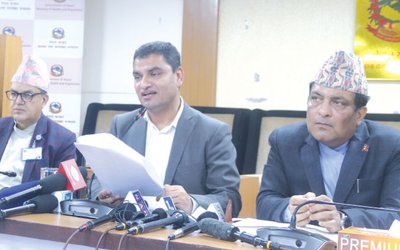Sustainable Development Goals (SDGs) is a new road map to improve the lives of people throughout the world over the next 15 years. Sexual and Reproductive Health & Rights issues are currently featured on the SDG agenda expands their presence at both the global and national levels, by establishing SRHR specific indicators to measure progress toward the SDGs.
For the field of SRHR, the SDGs include several relevant goals and targets such as those related to health, education and gender quality. The goals and targets encompass many key aspects of SRHR, including access to SRHR services, comprehensive sexuality education, ensure reproductive rights, achieve gender equality as a matter of women's and girl's human rights, and the ability to make decisions about one's own health. The SDGs are ambitious in their size and scope, consisting of 17 goals and 169 targets that are applicable to all countries equally, and take into account the economic, social and environmental challenges of our world.
The major component of SDGs SRHR related target is to advance women's access to safe and legal abortion, in accordance with the new SDGs focused on health and gender equality.
SDGs Targets By 2030:
TARGET 3.1: By 2030, reduce the global maternal mortality ratio less than 70 per 100,000 live births: The 2030 target calls for a two-thirds reduction in maternal mortality, based on the latest estimate for the maternal mortality ratio globally, at 210 maternal deaths per 100,000 live births. This is well known facts that leasing cause of maternal deaths is unsafe abortion. A report by the United Nations Secretary-General in 2013 highlighted that numbers of unsafe abortion will continue to increase unless women's access to safe abortion and contraceptives are questioned. Unsafe abortion is entirely preventable through ensuring women's access to effective contraception together with safe and legal comprehensive abortion care in all regions, countries and among poor, young and vulnerable women. Nepal has announced free abortion service in 2015, and yet not implemented. This decision will definitely push the nation to achieve the target to reduce maternal mortality by 2030.
TARGET 3.5: By 2030, ensure universal access to sexual and reproductive healthcare services, including for family planning, information and education, and the integration of reproductive health into national strategies and programs: Contraception is an essential component of family planning and SRH that allows individuals to determine if and when to have a child.
Unmet need among the adolescent and young is particularly high for spacing with 37.5 and 23.3 percent respectively (NDHS 2011).
Ensuring that SRH services are made available along with other basic health care e.g.immunization services or treatment for TB may increase access to care and information, especially for disadvantaged populations, such as adolescents, people with disabilities and those living with HIV. Access of services especially SRH related is difficult due to geographical areas in Nepal. SGDs planning and implementation will help Nepal Government to identify geographical areas where and types of services for which availability is lagging can help better target resources and technical assistance.
Access to safe, legal abortion has been recognized by the global community as an essential intervention in a package of comprehensive sexuality and reproductive health services that should be available to all women regardless of age, ethnicity, gender identity, geographic location, marital status, race, religion, socio-economic status or migrant status.
Improved SRHR knowledge can help young people make healthy, informed choices about their reproductive loves. Understanding levels of knowledge among adolescents can help identifying gaps in preparing young people for this important part of life.
"Only 38% of women know about abortion is legal in Nepal-NDHS 2011. Knowing the adolescent birthrate and whether those births were planned can help quantify challenges facing young people, including their unmet need for contraception and lack of access to education, information and services appropriate for them. For very young adolescents (ages 10-14), early childbearing can be a marker of forced marriage and abuse."
And also adolescents in particular need universal access to youth-friendly and non-judgmental sexual and reproductive health services that respect their sexual and reproductive health and rights and their rights to confidentiality, privacy and informed consent.
TARGET 5.6: Gender Equality: Lack of gender quality affects almost every facet of life for women and girls around the world. Gender equality includes recognition of women's autonomy and capacity to make informed and independent decisions about their sexuality and reproduction through laws and policies allowing access to safe and legal abortion. Women's access to safe and legal abortion is as relevant to gender equality as women's equal access to education, employment, adequate food and housing.
In order to protect women's health and lives, it is critical to promote access to safe abortion and to reduce the incidence of and complications from unsafe abortion. Better data collection is necessary in this area to improve the medical and legal environment for providing safe abortion care and to reduce the stigma surrounding the procedure.
The success of key SDGs will depend in significant part on the extent to which important stakeholders-including governments, UN agencies and non-governmental organizations take seriously the specific SRHR targets and fully implement the relevant policies, services and programs to attain them.
- Women with Disability and SRHR
- Nov 28, 2016
- Sustainable Development Goals and Safe Abortion
- Oct 04, 2016
- Kumari: A FeministThrough Gender Lens and Feminism
- Sep 06, 2016
















